In the series of events in response to the World Day to Combat Desertification 17.6, on June 18, 2018, in Lao Cai City, Vietnam Administration of Forestry (VNFOREST), Ministry of Agriculture & Rural Development (MARD), held the seminar: “The role of the community in management and sustainable use of forest land”. Attending the seminar were representatives of leaders of the Vietnam Administration of Forestry (VNFOREST), leaders of agriculture and rural development department in the provinces of Lao Cai, Yen Bai, Dien Bien and Lai Chau, representatives of Forest Science Institute of Vietnam, Forestry Project Management Board, Vietnam Forestry University, Branch of Thai Nguyen Agriculture and Forestry University in Lao Cai City, leadership of Vietnam Forester Club (VFC) and representatives of GIZ, international organizations in Vietnam such as ICRAF, CIFOR.
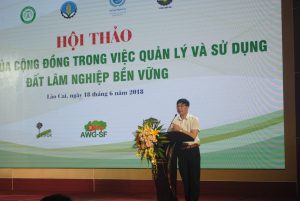
Opening remarks, Prof. Dr. Pham Van Dien, Deputy director of the Vietnam Administration of Forestry (VNFOREST) confirmed that this is an important event that to be not only to respond the world day to combat desertification, but also to show the willing of action of Vietnam for sustainable land management and use. At the global level, the convention to combat desertification focuses on preventing land from degradation which means to combat desertification. Currently, there are about 4 billion hectares of land at risk of degradation that are being affected to more than 1 billion people and have been taken place in approximately 110 countries and territories globally. In Vietnam, soil degradation is most apparent in four regions: Northwest, Center Coastal, Highland, Mekong Delta River. There are about 10 million hectares of land at risk of degradation that accounted for 30% of total of natural area including 1.7 to 1.8 million hectares of forest land. Land degradation is considered to be one of three types of major disasters (ranked third) after hurricane and floods. State assigned forest sector to manage 16.2 million hectares of land nationwide including 14.4 million hectares of forest land and remaining 1.8 million hectares of non-forest land. Sustainable land management and use are not only to manage forest well but also making livelihood for people who are depending forest. Additionally, this is also to perform national target of forest sector which has referred in forest restructure plan and development philosophy in Forest Law.
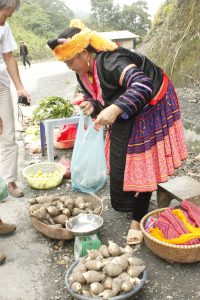
Forest lands that allocated to forest owner are scared and fragmented. According to the statistics, Vietnam has over 1.1 million forest owners that are managing and developing 7.1 million forest plots including almost 3 million hectares have been allocated to community to manage and protect. Nationwide, there are about 24 million people, which their livelihood associated to forest, including 10 million poor and local ethic minority and indigenous people. Without strong policy to socialize forest sector and to be continuously confirmed in Forest Law, the role of community for forest has increasingly been raised. Community are not only allocating to manage and protect forests but also becoming the real forest owners.
However, within limited forest land, the number of about 0.66 ha per capital use will be gradually fallen by 130 square meters per year because of population growth. Self-restore ability of soil is always limited and conditional and therefore sustainable land use is overall solutions including science and technology use to intensively cultivate forest, detecting and predicting degradation progress of soil especially slopping land
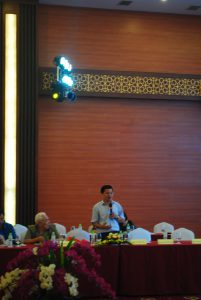
Presented at the seminar, the speakers outlined the situation of land degradation in Vietnam, the lessons learned and recommendations for improving the situation.
In general, soil degradation in the Northwest provinces is due to local people who have difficult living, outdated farming practices, and cutting forest to take land for crop, and grazing and land fallowing. Therefore, in order to prevent soil degradation in the region and engaging people into forest protection and development, improving people living condition is a major solution. However, finding out what solutions are appropriate for each regions and localities should be built on the basic of careful consultation and research. The evidence of this is plan to cultivate local trees known as black cardamom (thảo quả), which has been used to cultivate in some locations, is a driver of forest degradation. Testament to this, Mr To Manh Tien, Deputy Director of Lao Cai DARD shares the result of research which has been carried out in locality showing that each 1 kilogram of dried cardamom needs 50 kilograms of firewood. However, people have cut down regenerated trees for their purpose to dry cardamom and therefore this spicy is not be encouraged to cultivate widely in Lao Cai province.
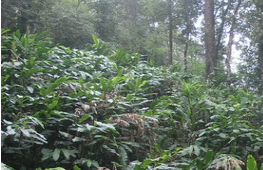
Other measure to prioritize people to farm local tree of son tra known as Mong’s apple (táo mèo) has been developed and implemented in several provinces of Northwest especially in Yen Bai Province. However, son tra is a light loving plant and therefore it should be only planted in vacant land. This measure is appropriate for rising income for local people but is not to improve forest generation.
Miss Rebica Udan, the expert of GIZ, said that solution is seemed to be good but if people don’t accept, it will be impossible to use. However, we should calculate costs and benefits for each measure and set out varied solutions simultaneously and therefore we can select which solution is most appropriate for object to apply.
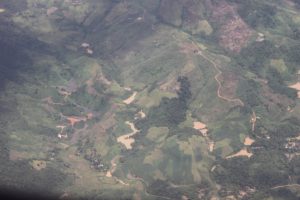
Speaking at the seminar, Mr. Phan Thanh Xuan, former Deputy Minister of Forestry Ministry, Chairman of Club Vietnam Forestry, cites two famous poems: “The soul of nation is being in the forest/ if forests lost, nation shall be at risk” to emphasize importance of forest. In Vietnam, rich forest, which is most appropriate for preventing soil degradation, occupies quiet small area and therefore it is necessary to set policy on improving poor forest. Finance source taking from Payment for Forest Service (PFES) is being an important fund for forest management and protection. However, PFES is mainly payment from power plants while many other sectors, which are using forest service, have not being paid. Therefore, it is essentially to make more specific regulations for others like using water for aquaculture, scenery for tourist service, and forest lease for medicinal plant cultivation under forest canopy, and so on. Government should build innovative finance mechanism for forest sector like carbon market. In parallel with policy development, forest sector should strength propaganda and communication activities and policy advocacy in order to get supports and consensus of public society against innovative mechanism of finance. This is important step to make breakthrough to boost forest environment development in Vietnam.
Cao Thanh – Vice Secretary General



